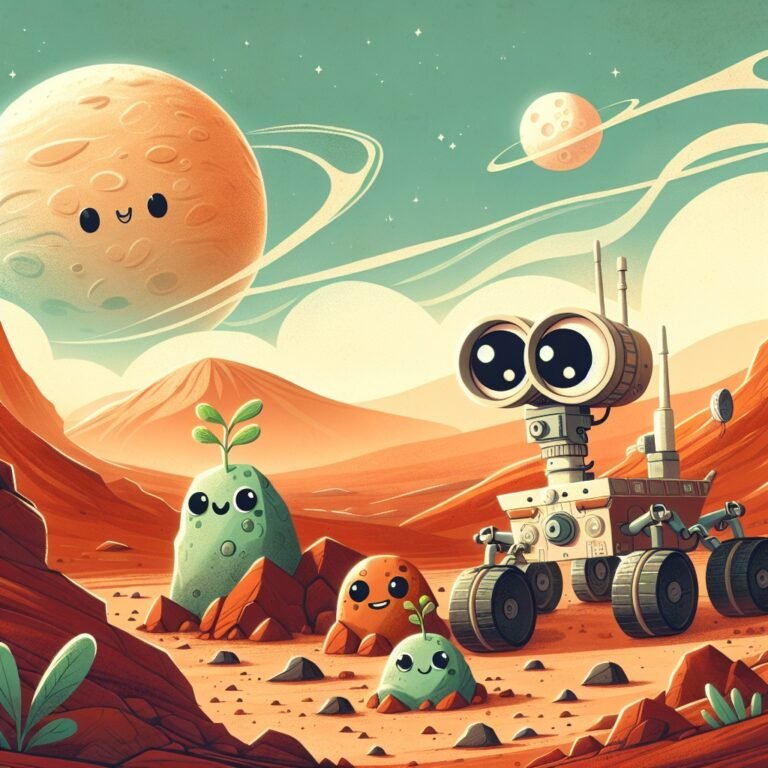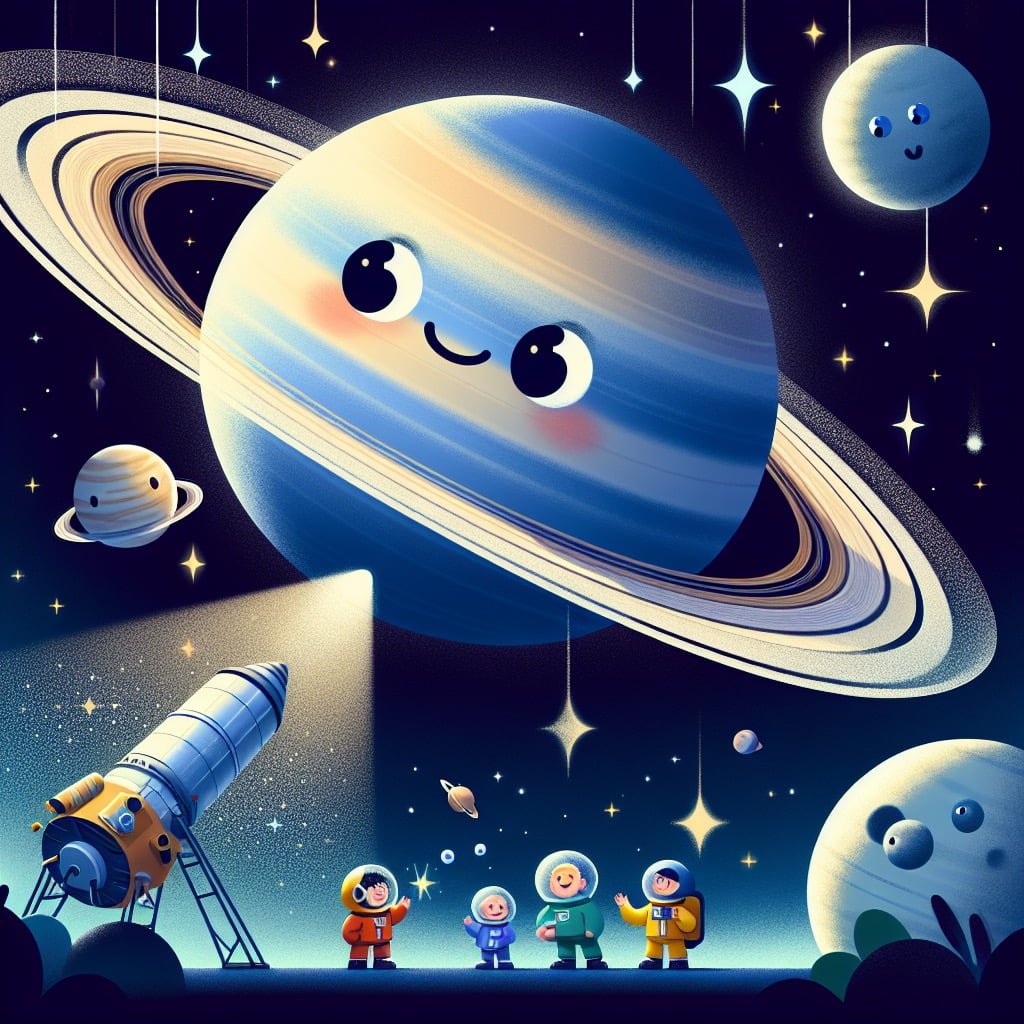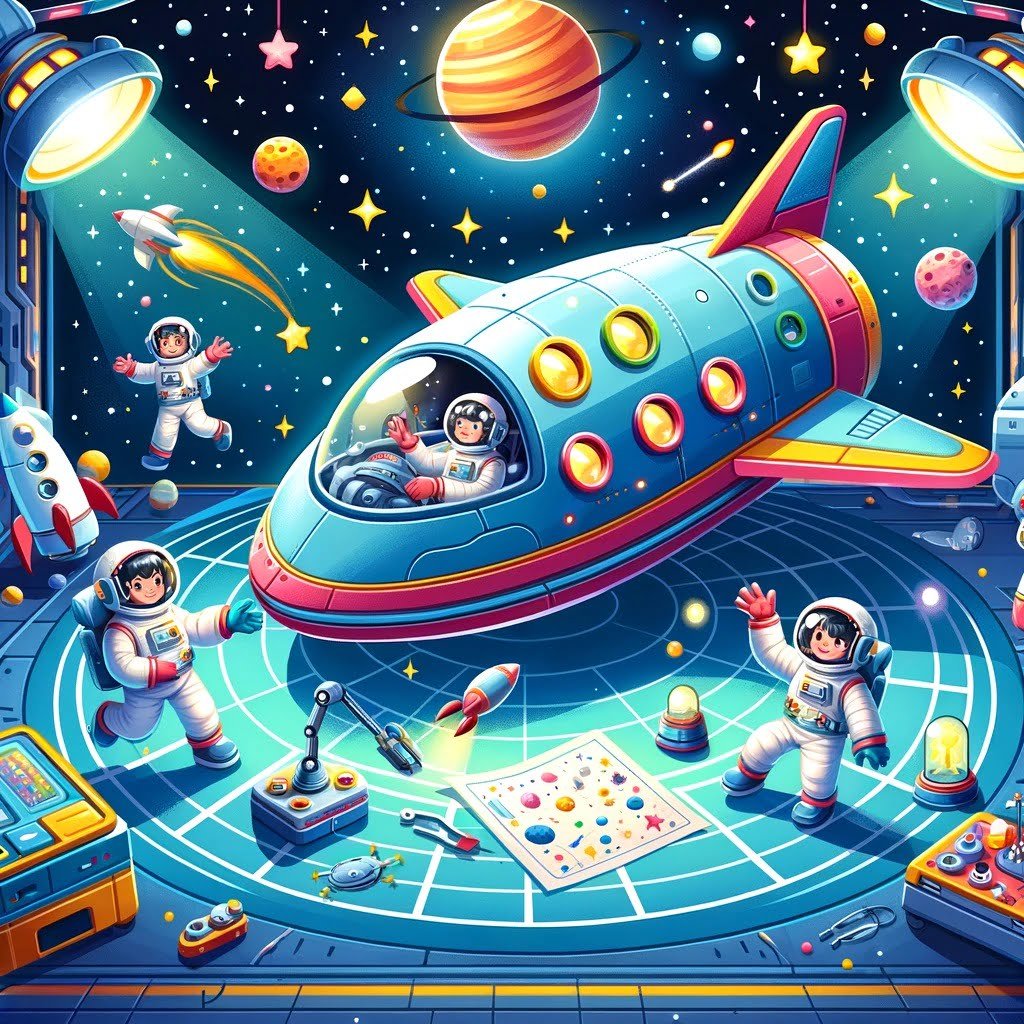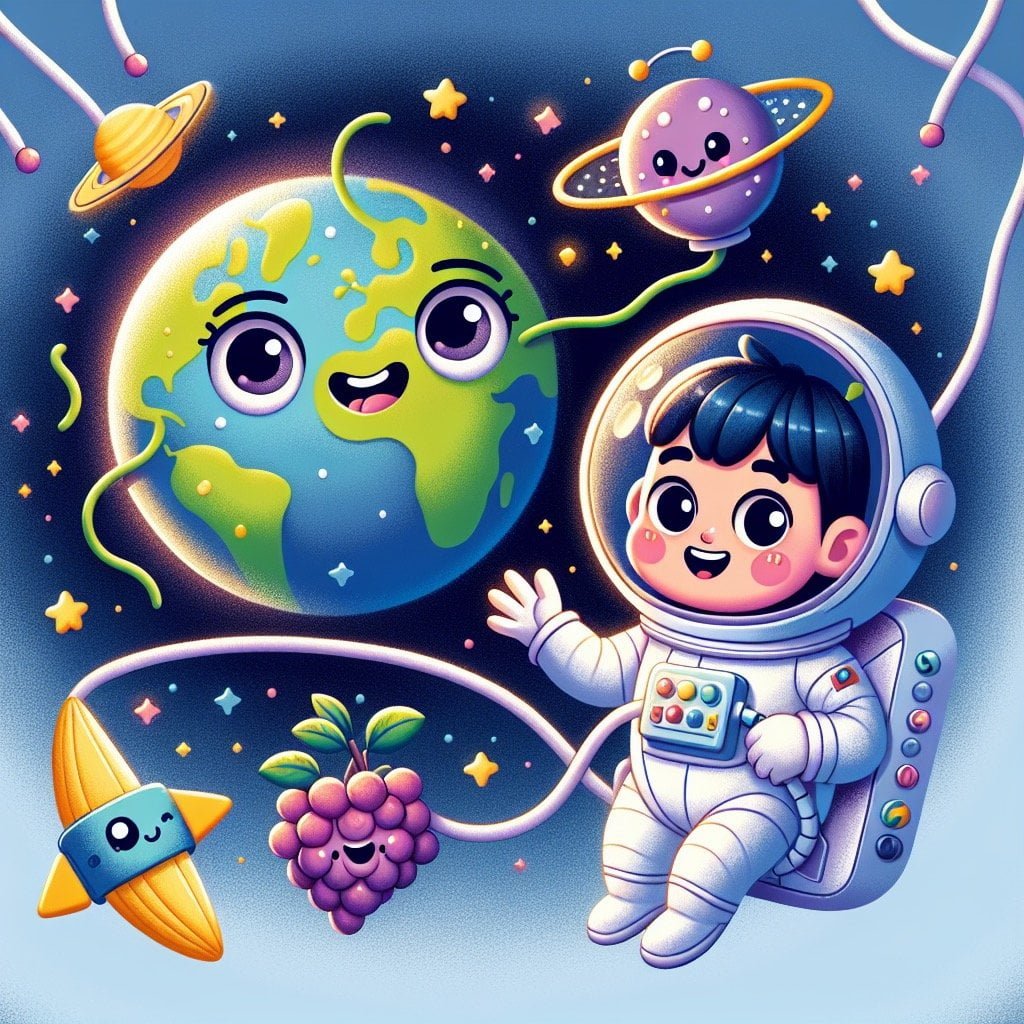Welcome to an exciting journey through fascinating Mars facts for kids! Join us as we delve into the wonders of the Red Planet and uncover its mesmerizing secrets. From the iconic red color that earned it the nickname “Red Planet” to the largest volcano and canyon in the solar system, Mars is teeming with captivating discoveries waiting to be explored. Get ready to ignite your curiosity and passion for space exploration as we unravel the mysteries of Mars and delve into its rich history and potential for harboring life. Embark on this thrilling adventure with us and discover all that Mars has to offer, inspiring the next generation of young astronomers and explorers. Let’s dive into the incredible world of Mars and unlock the treasure trove of knowledge it holds for inquisitive minds like yours!
Mars Facts For Kids
1. Mars is Known as the Red Planet

For younger kids: Mars is a red planet! It looks like a big red ball in space.
For older kids: Mars appears red because its surface is covered in iron oxide, also known as rust, which gives the planet its signature color.
Detailed explanation:Mars, also known as the Red Planet, is the fourth planet from the Sun in our solar system. Its reddish appearance is due to iron oxide, or rust, covering its surface. This dusting of iron oxide gives Mars its distinctive color and sets it apart from the other planets in our solar system.
There are several interesting Mars Facts For Kids that make this planet a favorite among space enthusiasts. One of the most intriguing facts about Mars is its similarities to Earth. Mars has a day that is only slightly longer than a day on Earth, lasting about 24.6 hours. It also has a tilted axis, similar to Earth’s, which means it experiences seasons just like we do. However, due to its distance from the Sun, the seasons on Mars are much more extreme than those on Earth.
Another fascinating fact about Mars is its two small moons, Phobos and Deimos. These moons are irregularly shaped and are thought to be captured asteroids from the asteroid belt between Mars and Jupiter. They are much smaller than Earth’s moon and have unique orbits that are close to the planet’s surface.
Mars is also home to the largest volcano in our solar system, Olympus Mons. This massive shield volcano is over 13 miles high and 370 miles in diameter, making it nearly three times taller than Mount Everest. Mars is a planet of extremes, with not only the largest volcano, but also the largest canyon, Valles Marineris, which stretches over 2,500 miles long and up to 7 miles deep.
In conclusion, Mars is a fascinating planet with many unique features that make it stand out in our solar system. Its red color, similar characteristics to Earth, small moons, and massive volcanoes and canyons make it a popular subject for both scientists and kids alike. Exploring Mars and learning more about its mysteries will continue to captivate our curiosity for years to come.
Mars Facts For Kids
2. Mars has the Largest Volcano in the Solar System
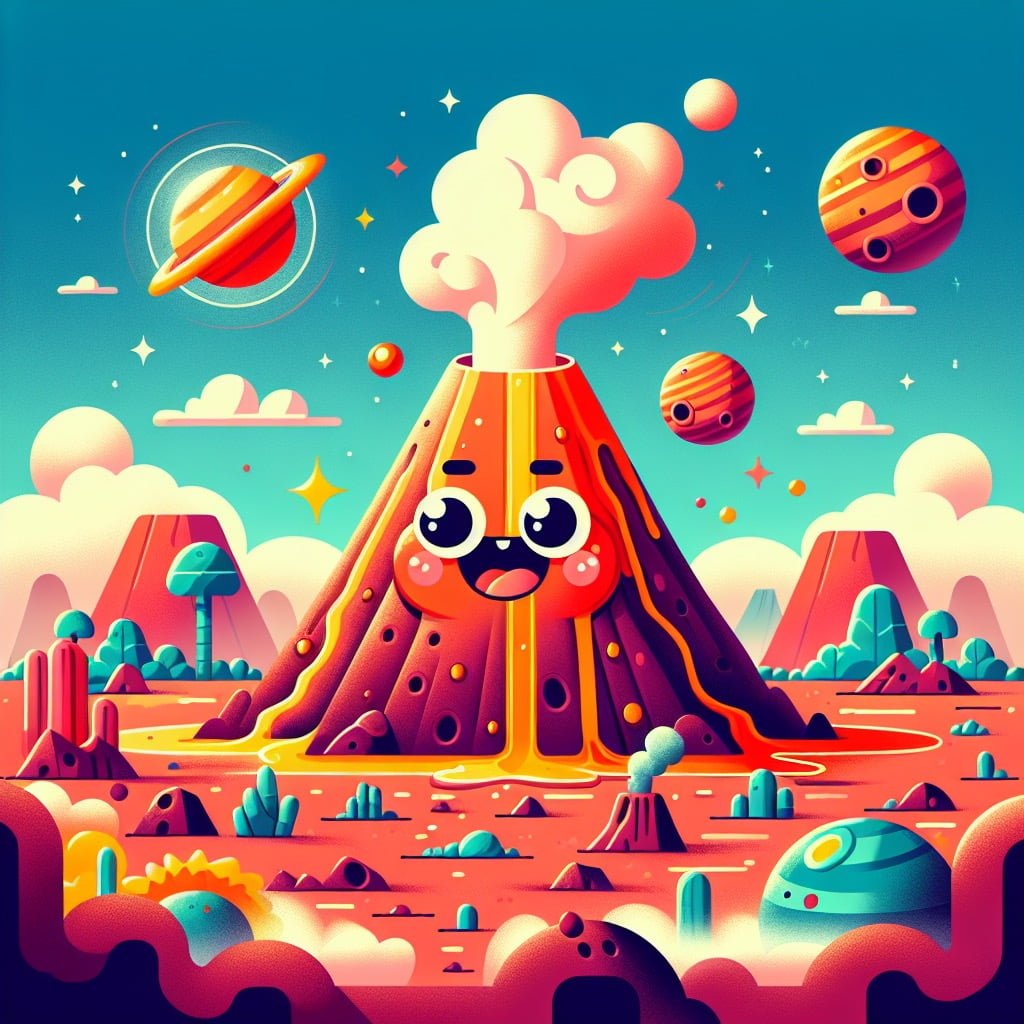
For younger kids: Mars has a huge volcano called Olympus Mons—it’s super tall!
For older kids: Olympus Mons on Mars is the tallest volcano in the solar system, reaching a height of nearly 13.6 miles (22 kilometers), making it three times taller than Mount Everest.
Detailed explanation:One of the most fascinating Mars Facts For Kids is that Mars is home to the largest volcano in the entire solar system. This massive volcano is called Olympus Mons, and it is an absolutely staggering sight to behold. Olympus Mons stands at an impressive 13.6 miles (22 kilometers) tall, which is nearly three times taller than Mount Everest, Earth’s highest mountain.
Olympus Mons is a shield volcano, similar to the volcanoes found in Hawaii, but on a much grander scale. This type of volcano is formed from layers of lava that flow out slowly and build up, creating a broad, gently sloping shape. The size of Olympus Mons is so massive that its base stretches over 370 miles (600 kilometers) in diameter, covering an area roughly the size of the state of Arizona.
The reason for the incredible size of Olympus Mons lies in the geology and geography of Mars itself. Mars does not have tectonic plates like Earth, so when a volcano erupts on Mars, it can keep erupting in the same spot for a much longer period of time. This continuous volcanic activity over millions of years allowed Olympus Mons to grow to such immense proportions.
Studying Olympus Mons and other features on Mars can help us better understand the geological processes that shape planets, and provide insight into the history of volcanic activity on Mars. This amazing volcano is just one of the many wonders waiting to be explored on the Red Planet.
Mars Facts For Kids
3. A Year on Mars is Almost Twice as Long as a Year on Earth

For younger kids: On Mars, a year is a really, really long time—almost twice as long as our year!
For older kids: It takes Mars about 687 Earth days to orbit the Sun, which means a year on Mars is nearly 1.9 Earth years.
Detailed explanation:Mars Facts For Kids
One of the most interesting facts about Mars is that a year on the Red Planet is almost twice as long as a year on Earth. This is due to the different orbits of the two planets around the sun. While Earth takes approximately 365 days to complete one orbit, Mars takes about 687 Earth days to do the same. This means that a year on Mars is about 1.88 Earth years long.
This significant difference in the length of a year on Mars compared to Earth has many implications for the Martian calendar. Seasons on Mars last almost twice as long as seasons on Earth, with each season lasting approximately six Earth months. This is because the tilt of Mars’s axis is similar to Earth’s, but the planet’s longer orbit around the sun causes each season to be more prolonged.
For kids who are interested in space and astronomy, learning about the different lengths of a year on Mars and Earth can be a fascinating topic. It can help them understand the concept of orbits and how they affect the passage of time on different planets. Additionally, it can spark their curiosity about the differences between Earth and its neighboring planets in our solar system.
In conclusion, the fact that a year on Mars is almost twice as long as a year on Earth is a captivating aspect of the Red Planet that showcases the unique characteristics of our solar system. Kids who are interested in exploring the wonders of space will find this Mars fact truly intriguing.
Mars Facts For Kids
4. Mars has Dust Storms as Big as Continents

For younger kids: Mars gets really windy and has super big dust storms.
For older kids: The dust storms on Mars can grow to be as large as continents and can last for several months, covering the entire planet in a cloudy shroud.
Detailed explanation:Mars Facts For Kids are not just limited to the planet’s red color or its potential for hosting life in the future. One of the most fascinating aspects of Mars is its massive dust storms, which can grow to sizes larger than continents on Earth. These dust storms are a common occurrence on the Red Planet and can have a significant impact on its atmosphere and surface.
The key factor that contributes to the formation of these massive dust storms on Mars is its thin atmosphere. Unlike Earth, Mars has a very thin atmosphere composed mostly of carbon dioxide. This thin atmosphere allows for strong winds to easily pick up and carry dust particles across the planet. As these dust particles become airborne, they can be lifted up into the atmosphere and form massive storm systems that can cover large portions of the planet.
These dust storms on Mars can last for weeks, or even months, at a time. They can drastically alter the temperature and visibility on the planet’s surface, making it challenging for spacecraft and rovers to operate effectively. In fact, some dust storms on Mars have been so large and intense that they have completely engulfed the planet, obscuring its surface features from view.
Overall, the dust storms on Mars are a unique and intriguing aspect of the planet’s atmosphere. They provide valuable insights into the dynamics of its thin atmosphere and the impact of weather patterns on the Martian surface. Exploring and studying these dust storms further could help us better understand Mars and its potential for sustaining life in the future. So, next time you share Mars Facts For Kids, don’t forget to mention the planet’s massive dust storms that are as big as continents on Earth.
Mars Facts For Kids
5. Mars Has Two Tiny Moons Named Phobos and Deimos

For younger kids: Mars has two little moons that look like rocks spinning around it.
For older kids: The two small moons of Mars, Phobos and Deimos, are irregularly shaped and are thought to be captured asteroids.
Detailed explanation:Mars, often referred to as the “Red Planet,” is the fourth planet from the sun in our solar system. One interesting aspect of Mars that captures the imagination of kids and adults alike is the fact that it has two tiny moons named Phobos and Deimos. These moons are much smaller than Earth’s moon, with Phobos being the larger of the two at about 14 miles in diameter, while Deimos is even smaller at only about 8 miles in diameter.
These moons were discovered in 1877 by American astronomer Asaph Hall, who named them after the sons of the Greek god of war, Ares, which is the Greek equivalent of the Roman god Mars. Phobos means “fear” in Greek, while Deimos means “panic” or “dread,” reflecting the mythological attributes of the sons of Ares.
Phobos and Deimos are irregularly shaped and are thought to be captured asteroids that were pulled into orbit around Mars. They orbit very close to the planet, with Phobos being only about 3,700 miles away from the Martian surface, making it one of the closest moons to its planet in the solar system.
Studying these moons provides valuable insights into the history and geology of Mars. They also serve as potential future landing sites for human missions to the Red Planet. Overall, the presence of Phobos and Deimos adds to the allure and mystery of Mars, making it a fascinating subject for kids and adults interested in space exploration and astronomy.
In conclusion, these Mars Facts For Kids are not only interesting and educational but also serve as a reminder of the wonders of our solar system and the endless possibilities of exploration beyond Earth.
Mars Facts For Kids
6. Mars Has the Largest Canyon in the Solar System
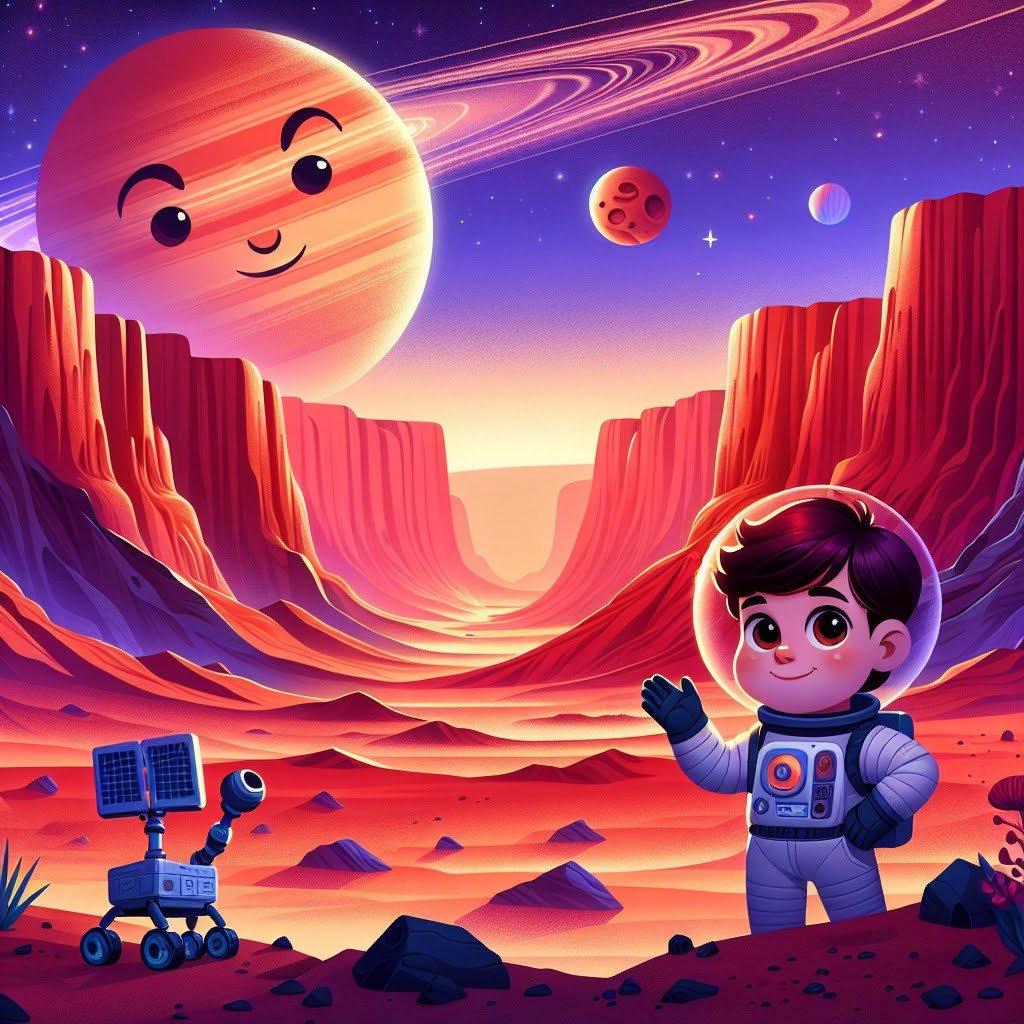
For younger kids: Mars has a super long and deep canyon that is way bigger than any on Earth.
For older kids: The Valles Marineris canyon system on Mars is the largest in the solar system, stretching over 2,500 miles (4,000 kilometers) long and up to 7 miles (11 kilometers) deep.
Detailed explanation:Mars Facts For Kids
One of the most intriguing features of Mars is its massive canyon, Valles Marineris. Stretching over 4,000 kilometers in length, it is the largest canyon in the entire solar system. To put that into perspective, Valles Marineris is more than ten times longer than the Grand Canyon on Earth.
The formation of Valles Marineris is believed to be the result of a combination of tectonic activity and erosion. The canyon runs along the Martian equator and is up to 7 kilometers deep in some places. It is thought that the canyon was formed billions of years ago when tectonic forces caused the Martian crust to stretch and crack, creating the immense chasm that we see today.
Studying Valles Marineris can provide valuable insights into the geological history of Mars. By examining the layers of rock exposed in the walls of the canyon, scientists can learn about the planet’s past climate, water activity, and volcanic activity.
For kids interested in space exploration, learning about Mars and its largest canyon can be an exciting adventure. Imagine standing on the edge of Valles Marineris and looking out over the vast expanse of rocky terrain below. What stories do the rocks tell about the history of Mars? How might future explorers navigate the treacherous terrain of the canyon?
In conclusion, Valles Marineris is not only a remarkable feature of Mars but also a window into the planet’s mysterious past. By exploring this massive canyon, scientists and space enthusiasts alike can uncover the secrets of Mars and its fascinating geological history.
Mars Facts For Kids.
Mars Facts For Kids
7. Mars Once Had Rivers and Lakes
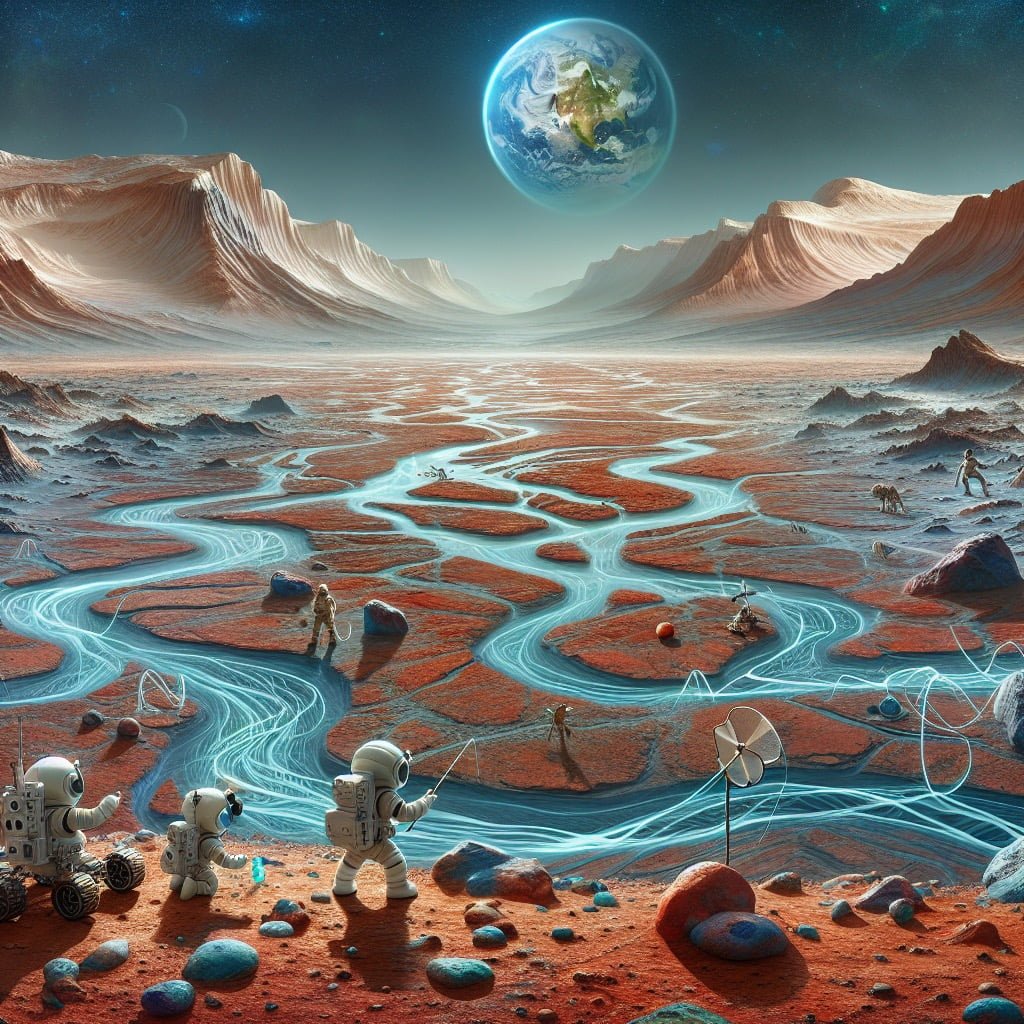
For younger kids: Mars used to have rivers and lakes, just like Earth!
For older kids: Evidence suggests that in the ancient past, Mars had flowing rivers, lakes, and even a vast ocean that covered a large part of the northern hemisphere.
Detailed explanation:Mars, also known as the “Red Planet,” has long been a subject of fascination for scientists and space enthusiasts alike. One of the most intriguing discoveries about Mars is that it once had rivers and lakes. This finding has sparked a great deal of interest in the possibility of past life on the planet.
Through various missions to Mars, such as the rovers Spirit and Opportunity, scientists have been able to gather evidence that suggests Mars was once a much wetter and warmer place than it is today. The presence of ancient river channels, valley networks, and lake beds all point to a time when liquid water flowed freely on the Martian surface.
By studying the geology of Mars, scientists have been able to piece together a picture of what the planet may have looked like billions of years ago. They believe that Mars had a thicker atmosphere in the past, which would have allowed for liquid water to exist on the surface. This, combined with volcanic activity that may have provided sources of heat, would have created the conditions necessary for rivers and lakes to form.
Understanding the history of water on Mars is crucial for understanding the planet’s potential to have supported life. While Mars is currently a cold and barren desert, the presence of rivers and lakes in the past indicates that conditions may have been more hospitable for microbial life to thrive. By continuing to study Mars and gather more Mars Facts For Kids, scientists hope to unlock the secrets of the planet’s past and determine if life ever existed there.
Mars Facts For Kids
8. Mars Has Seasons Just Like Earth

For younger kids: Mars has four seasons, just like we do on Earth!
For older kids: Mars experiences seasons because its axis is tilted, though the seasons are about twice as long as those on Earth due to its longer orbit around the Sun.
Detailed explanation:One fascinating fact about Mars is that it experiences seasons just like Earth does. This may come as a surprise to many people, as Mars is often thought of as a cold and desolate planet. However, Mars actually has a tilt on its axis similar to Earth’s, which causes it to experience seasons as it orbits the sun.
Just like on Earth, Mars’ axis tilt causes different parts of the planet to receive varying amounts of sunlight throughout the year. This results in changes in temperature and weather patterns, leading to distinct seasons on the Red Planet.
During the Martian winter, the polar regions can become covered in a layer of frost or snow, while in the summer, the ice caps may retreat as the temperatures rise. These seasonal changes can have a significant impact on the planet’s atmosphere and surface features.
Studying the seasons on Mars can provide valuable insights into the planet’s climate and geology. By observing how the atmosphere changes with the seasons, scientists can better understand the planet’s weather patterns and the processes that shape its surface.
Overall, learning about the seasons on Mars can help us understand more about the planet’s environment and how it compares to Earth. By exploring these Mars Facts For Kids, we can deepen our knowledge of the Red Planet and perhaps even uncover clues about the possibility of life beyond our own planet.
Mars Facts For Kids
9. Mars is the Focus of Missions to Search for Evidence of Past Life
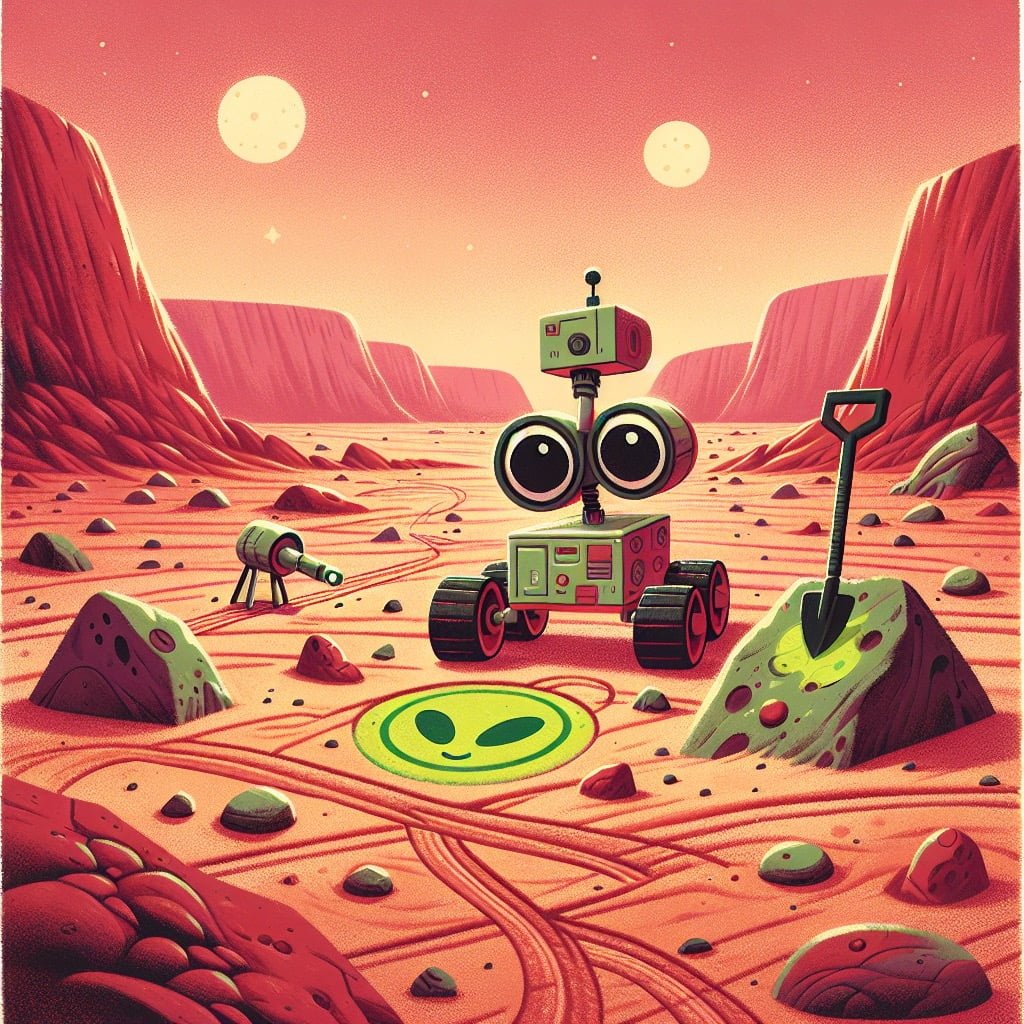
For younger kids: Scientists are sending robots to Mars to look for signs of aliens!
For older kids: NASA and other space agencies are exploring Mars with rovers and future missions to search for clues of ancient microbial life and better understand the planet’s history.
Detailed explanation:Mars Facts For Kids are fascinating to explore, especially when considering the ongoing missions to search for evidence of past life on the red planet. Mars has long been a focus of scientific exploration due to its potential to harbor life in the past. The planet’s similarities to Earth, such as a day length close to 24 hours and the presence of water ice, make it an intriguing subject for study.
One of the most notable missions currently underway is the Mars 2020 Perseverance rover, launched by NASA in July 2020. This rover is equipped with a suite of instruments designed to search for signs of ancient microbial life on Mars. The rover will collect rock and soil samples, which will be stored for potential return to Earth in the future. By studying these samples, scientists hope to gain a better understanding of Mars’ past climate and geology, and whether conditions were once favorable for life to exist.
Another mission of interest is the European Space Agency’s ExoMars rover, set to launch in the near future. This rover will also search for evidence of past life on Mars, specifically focusing on the planet’s subsurface where microbial life may have been able to survive.
Overall, Mars Facts For Kids are not only engaging but also educational, as they shed light on the ongoing search for signs of past life on Mars. These missions represent a significant step towards answering one of humanity’s most profound questions: are we alone in the universe? By delving into the mysteries of Mars, scientists hope to uncover clues that could potentially redefine our understanding of life beyond Earth.
Mars Facts For Kids
10. Mars is the Second Smallest Planet in the Solar System
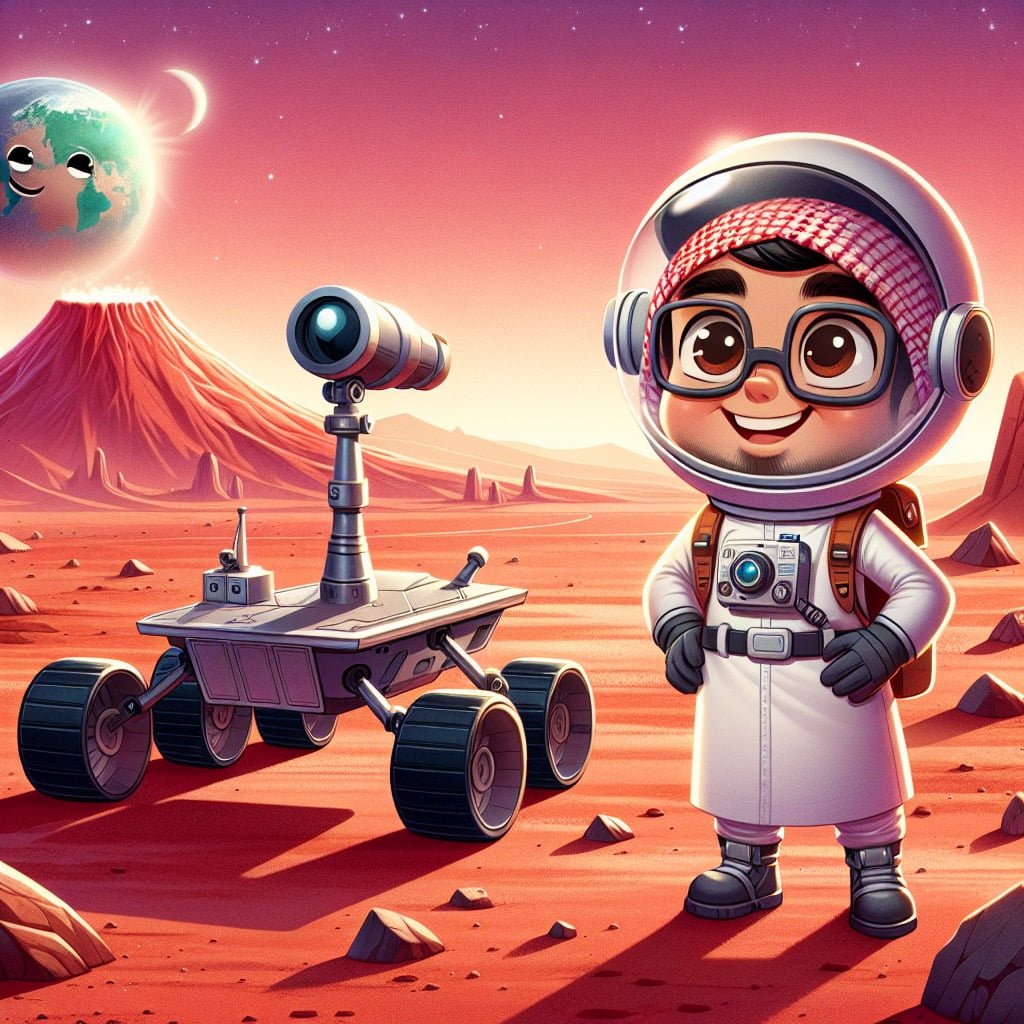
For younger kids: Mars is a small planet, but it’s still really cool!
For older kids: Mars is only slightly larger than Mercury, making it the second smallest planet in our solar system.
Detailed explanation:Mars Facts For Kids: Mars, the red planet, is known for being the second smallest planet in our solar system, after Mercury. Despite its small size, Mars has captured the fascination of scientists, researchers, and space enthusiasts alike due to its potentially habitable conditions and similarities to Earth.
One of the most interesting aspects of Mars is its unique landscape, which includes towering volcanoes, deep canyons, and vast deserts. These features have led scientists to believe that Mars may have once had liquid water on its surface, making it a prime target for future exploration missions in search of ancient life forms.
In addition to its geology, Mars is also home to the largest volcano in our solar system, Olympus Mons, which stands at a staggering 13.6 miles high. This is just one of the many fascinating facts about Mars that make it an exciting subject of study for both kids and adults alike.
Despite its small size, Mars has a thin atmosphere made up mostly of carbon dioxide, which contributes to its cold temperatures and low air pressure. This fact, combined with its distance from the sun, makes Mars a harsh environment for potential human colonies.
In conclusion, Mars may be the second smallest planet in our solar system, but its size does not diminish its importance or intrigue. With ongoing missions and research, scientists are constantly uncovering new Mars Facts For Kids that continue to captivate our imaginations and push the boundaries of our understanding of the universe.
Did You Know?
Mars has captured the imagination of scientists, writers, and explorers for centuries, sparking our curiosity about the possibility of life beyond Earth.
Summary of Mars Facts For Kids
Embark on an exciting journey through the captivating world of Mars with our blog post, “Mars Facts For Kids.” This informative and engaging read is a treasure trove of knowledge that will spark curiosity and ignite a passion for space exploration in young minds. From its rusty-red landscape to towering volcanoes and vast canyons, Mars is a planet full of intriguing mysteries just waiting to be uncovered.
By delving into fun facts about Mars, such as its two tiny moons, Phobos and Deimos, and the massive Olympus Mons volcano, the tallest mountain in the solar system, children can expand their understanding of the universe and their place within it. This blog post not only provides valuable insights into the formation and evolution of the solar system but also offers potential clues about the existence of life beyond Earth.
With the rise of innovative technologies being developed for future manned missions to Mars, now is the perfect time for young minds to dive into the incredible world of the Red Planet. By fostering an interest in planetary science and space exploration, kids can dream big and look to the stars for endless possibilities. Join us as we unravel the secrets of Mars and discover all it has to offer – you won’t want to miss out on this thrilling adventure!
Sources and additional information for Mars Facts For Kids
WikipediaBritannicaNASAEuropean Space Agency (ESA)Space.comAstrophysical JournalSky & TelescopeUniverse TodaySpaceXThe Planetary SocietyAstronomy MagazineHubbleSiteNational Geographic KidsNASANational Air and Space MuseumESA KidsSpace.comThe Planetary SocietyNational Radio Astronomy Observatory (NRAO)Hayden PlanetariumSky & Telescope
